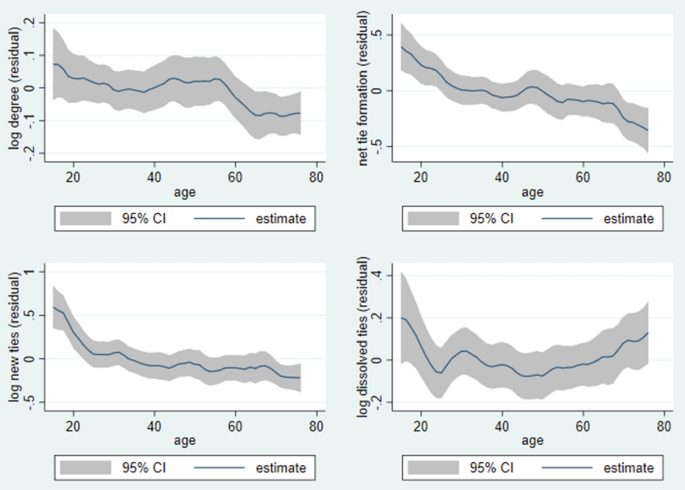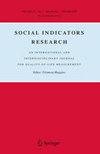Social Network Dynamics in the Context of Age: An Empirical Investigation
IF 2.8
2区 社会学
Q1 SOCIAL SCIENCES, INTERDISCIPLINARY
引用次数: 0
Abstract
Abstract This paper explores patterns and motivations for social tie formation and dissolution in the context of age. It provides empirical tests of the social convoy model, socioemotional selectivity theory, and the differential investment of resources (DIRe) model. Data comes from a survey administered face-to-face to a large, representative sample of the population of Poland ( n = 1000). Controlling for between-tie and between-ego differences, it is found that the intensity of forming and dropping new ties is a decreasing function of age, but the relationship becomes weaker among people aged 40 and older. The number of social ties people maintain (degree) is also a decreasing function of age. However, the number of social ties with family, as opposed to coworkers and other acquaintances, is roughly constant across age groups. Young women, but not men, tend to form fewer ties if they are married. Both expressive and instrumental motivations for social tie formation are relatively most active in middle adulthood. The data also reveal a “rich get richer” effect: people with relatively high degree and a more central position in a social network tend to form more new ties and enlarge their social network over time.

年龄背景下的社会网络动态:一项实证调查
摘要本文探讨了年龄背景下社会关系形成和消解的模式和动机。对社会护驾模型、社会情感选择理论和资源差异投资模型进行了实证检验。数据来自一项面对面的调查,调查对象是波兰人口中具有代表性的大样本(n = 1000)。控制关系之间和自我之间的差异,发现建立和放弃新关系的强度是年龄的递减函数,但在40岁及以上的人群中,这种关系变得较弱。人们维持的社会关系的数量(程度)也是年龄的递减函数。然而,与同事和其他熟人相比,与家人的社会联系数量在各个年龄段大致保持不变。年轻女性,而不是男性,如果结婚了,会倾向于建立更少的联系。社会关系形成的表达性动机和工具性动机在成年中期相对最为活跃。数据还揭示了一种“富者愈富”的效应:学历相对较高、在社交网络中处于中心位置的人,随着时间的推移,往往会建立更多的新关系,扩大自己的社交网络。
本文章由计算机程序翻译,如有差异,请以英文原文为准。
求助全文
约1分钟内获得全文
求助全文
来源期刊

Social Indicators Research
Multiple-
CiteScore
6.30
自引率
6.50%
发文量
174
期刊介绍:
Since its foundation in 1974, Social Indicators Research has become the leading journal on problems related to the measurement of all aspects of the quality of life. The journal continues to publish results of research on all aspects of the quality of life and includes studies that reflect developments in the field. It devotes special attention to studies on such topics as sustainability of quality of life, sustainable development, and the relationship between quality of life and sustainability. The topics represented in the journal cover and involve a variety of segmentations, such as social groups, spatial and temporal coordinates, population composition, and life domains. The journal presents empirical, philosophical and methodological studies that cover the entire spectrum of society and are devoted to giving evidences through indicators. It considers indicators in their different typologies, and gives special attention to indicators that are able to meet the need of understanding social realities and phenomena that are increasingly more complex, interrelated, interacted and dynamical. In addition, it presents studies aimed at defining new approaches in constructing indicators.
 求助内容:
求助内容: 应助结果提醒方式:
应助结果提醒方式:


